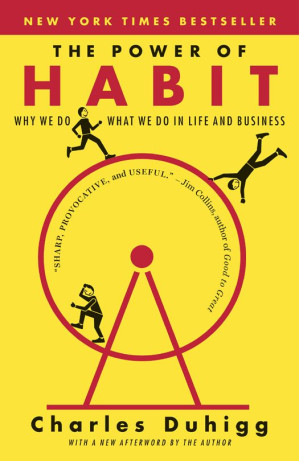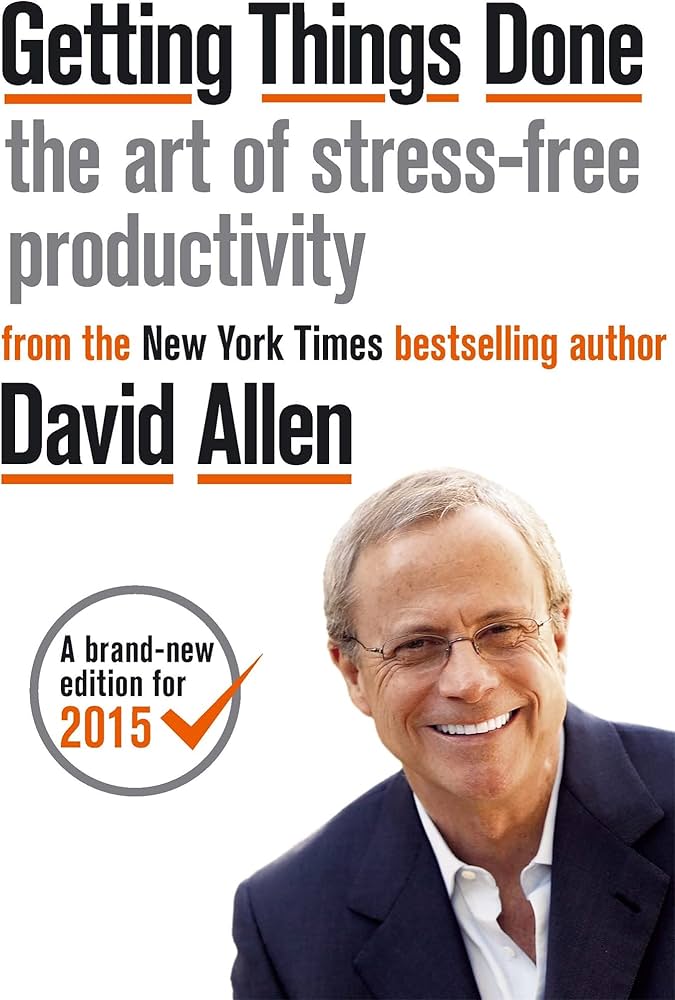The Habit Loop: Cue, Routine, Reward
Every habit follows a three-step loop: a cue triggers a routine that delivers a reward.

Book summary
by Charles Duhigg
Why We Do What We Do in Life and Business
Explores science behind habits and how to transform them
Topics
Read this book with one specific habit you want to change in mind, applying the habit loop framework immediately to your target behavior. Use Readever to highlight Duhigg's explanations of the cue-routine-reward cycle and keystone habits. The AI insights will help you identify your own habit patterns and create personalized strategies for lasting behavior change.
Things to know before reading
The Power of Habit reveals the science behind why habits exist and how they can be changed. Drawing on decades of scientific research, Pulitzer Prize-winning reporter Charles Duhigg explains how habits shape our lives, businesses, and societies—and how understanding the habit loop can transform everything from personal routines to organizational success.
Duhigg's research reveals that habits operate through a predictable neurological loop—and understanding this loop gives us the power to change them.
Every habit follows a three-step loop: a cue triggers a routine that delivers a reward.
You can't extinguish bad habits—you can only replace them with better ones.
Some habits have the power to start a process that transforms everything.
Ready to continue? Launch the Readever reader and keep turning pages without paying a cent.
This summary gives you the framework to identify, understand, and reshape the habits that drive your daily decisions. You'll learn how to apply the habit loop to break bad patterns, build productive routines, and create lasting change in your personal and professional life.
Key idea 1
Every habit follows a three-step loop: a cue triggers a routine that delivers a reward.
Duhigg explains that habits form through a neurological loop consisting of three elements: a cue (trigger), a routine (behavior), and a reward (satisfaction). This loop becomes increasingly automatic as the brain creates neural pathways that make the behavior more efficient. Understanding this structure is the first step toward changing any habit—whether it's biting your nails, exercising regularly, or checking your phone compulsively.
Remember
Key idea 2
You can't extinguish bad habits—you can only replace them with better ones.
Research shows that the most effective way to change a habit is not to eliminate it but to replace the routine while keeping the same cue and reward. This "Golden Rule" means maintaining the trigger and the satisfaction while substituting a healthier behavior. For example, if stress (cue) triggers smoking (routine) for relaxation (reward), you could replace smoking with deep breathing exercises while keeping the same cue and reward structure.
Remember
Key idea 3
Some habits have the power to start a process that transforms everything.
Keystone habits are patterns that create ripple effects throughout our lives. When people focus on changing these foundational habits, other positive changes follow naturally. For example, regular exercise often leads to better eating habits, increased productivity, and reduced stress—not because exercise directly causes these changes, but because it creates a cascade of positive behaviors and self-perception shifts.
Remember
The Power of Habit examines the science of habit formation through compelling stories from neuroscience, psychology, and business. Duhigg explores how habits work on individual, organizational, and societal levels, showing how understanding these patterns can lead to remarkable transformations.
The book combines cutting-edge research with real-world examples—from how Target predicts customer behavior to how Olympic swimmer Michael Phelps used habit loops to achieve peak performance. Duhigg demonstrates that while habits may seem mysterious, they follow predictable patterns that anyone can learn to recognize and reshape.
Open Readever's reader to highlight passages, ask the AI companion questions, and keep exploring without paying a cent.
Duhigg's journalistic background shines through in The Power of Habit, which reads like a series of compelling investigative reports woven together by a unifying scientific framework. The narrative balances rigorous research with engaging storytelling, making complex neurological concepts accessible and memorable.
Critical Reception: The book became an instant New York Times bestseller and was named one of the best books of the year by The Wall Street Journal and Financial Times. It has been praised for its practical insights and has influenced business leaders, athletes, and individuals seeking to understand and change their behavior patterns.
Anyone struggling to break bad habits or build productive routines
Leaders and managers seeking to understand organizational behavior patterns
Coaches, therapists, and educators working with behavior change
Product designers and marketers interested in user behavior patterns
Individuals interested in neuroscience and psychology applications
Charles Duhigg is a Pulitzer Prize-winning investigative reporter for The New York Times and the author of The Power of Habit and Smarter Faster Better. He graduated from Yale University and Harvard Business School, and was part of the team that won the 2013 Pulitzer Prize for explanatory reporting for a series on Apple and other technology companies.
Duhigg's reporting on business, technology, and the science of productivity has appeared in The New Yorker, The Atlantic, and other publications. His work combines rigorous research with compelling storytelling, making complex topics accessible to broad audiences. The Power of Habit has been translated into more than 30 languages and has influenced business practices, public policy, and individual behavior change worldwide.

Stephen R. Covey
Holistic, integrated approach for solving personal and professional problems

David Allen
Summary of escaping 9-5, living anywhere, joining the new rich

Gary Keller
Surprisingly simple truth behind extraordinary results through focused attention
Build your personalized reading stack
Download full-length ePubs in one click with personal cloud storage.
Blend AI-guided insights with tactile note-taking to accelerate reflection.
Follow curated reading journeys tailored to your goals and time budget.
Sync highlights across devices so lessons stick beyond the page.
Sign in to Readever to keep reading with AI guidance, instant summaries, and synced notes.
The Power of Habit reveals that habits aren't destiny—they're patterns we can understand and reshape. By mastering the habit loop and applying the Golden Rule of habit change, we can transform our personal routines, organizational cultures, and even societal behaviors. The book provides both the scientific foundation and practical tools to create lasting change, proving that small adjustments to our daily patterns can lead to extraordinary transformations.
Add detailed content, analysis, and insights about The Power of Habit here.
This extended outline can capture critical concepts, practical applications, and deeper understanding from the book. Use this space to provide comprehensive notes that enhance the reading experience.

Paulo Freire
Revolutionary education theory empowering oppressed through critical consciousness

Napoleon Hill
Classic guide to achieving wealth through mindset persistence

Julia Cameron
A 12-week program to recover creativity through morning pages and artist dates
Start reading The Power of Habit for free and unlock personalized book journeys with Readever.